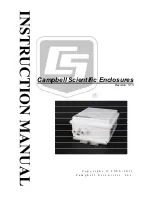
83
Appendix E: References
Occupational Health and Safety
U.S. Department of Labor
200 Constitution Avenue N.W.
Washington, DC 20210
(202) 523-1452
www.osha.gov
Industrial Ventilation-ACGIH
•
Fume hood face velocities between 60-100 lfpm
•
Maximum of 125 lfpm for radioisotope hoods
•
Duct velocities of 1000-2000 fpm for vapors, gasses and
smoke
•
Stack discharge height 1.3-2.0 x building height
•
Well designed fume hood containment loss, <0.10 ppm
Industrial Ventilation, A Manual of Recommended
Practice.
24
th
Edition, 2001
American Conference of Governmental Industrial
Hygienists
1330 Kemper Meadow drive
Cincinnati, OH 45240-1634
(513) 742-2020
www.acgih.org
ASHRAE 110-1995 Method of Testing Performance of
Fume Hoods
Evaluates fume hood’s containment characteristics
•
Three part test: Smoke generation, Face velocity profile,
Tracer gas release @ 4 liters per minute
•
Rated As Manufactured (AM), As Installed (AI) and As
Used (AU)
American Society of Heating, Refrigerating, and Air
Conditioning Engineers
1791 Tullie Circle N.E.
Atlanta, GA 30329
(404) 636-8400
www.ashrae.org
ANSI Z9.5-1993 Laboratory Standard
Covers entire laboratory ventilation system.
•
Vertical stack discharge @ 2000-3000 fpm
•
New and remodeled hoods shall have a monitoring
device
•
Ductless hoods should only be used with non-hazardous
materials
•
Fume hood face velocities between 80 – 120 fpm
Summary of Contents for 3980200
Page 2: ......
Page 13: ...8 Chapter 2 Prerequisites ...
Page 17: ...12 Chapter 3 Getting Started Figure 3 1 Filtered Enclosure Installation ...
Page 67: ...62 Chapter 7 Accessorizing and Modifying Your Filtered Enclosure ...
Page 82: ...77 Appendix C Filtered Enclosure Specifications C 1 ...
Page 83: ...78 Appendix C Filtered Enclosure Specifications C 2 ...
Page 84: ...79 Appendix C Filtered Enclosure Specifications C 3 ...
Page 85: ...80 Appendix C Filtered Enclosure Specifications C 4 ...
Page 92: ...87 ...
Page 93: ......






































